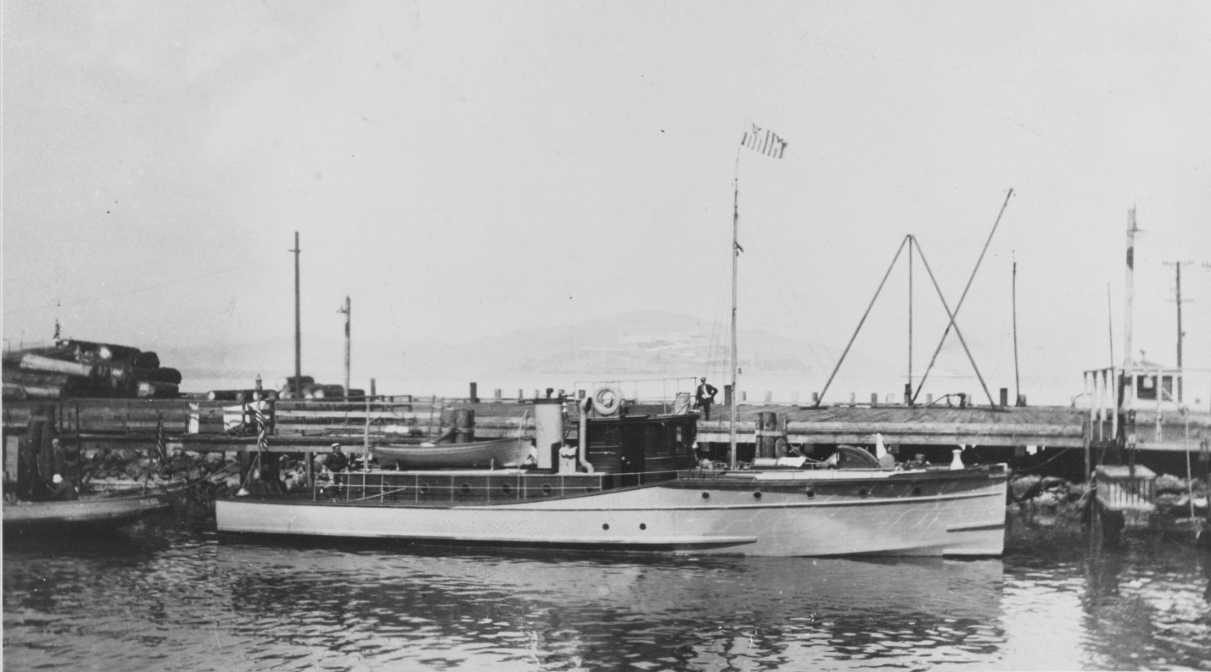Broadbill I (S.P. 823)
1918–1919
The first Broadbill retained the name she carried when acquired by the Navy; the second carried the name of the waterfowl characterized by having a broad, flat bill.
I
(S.P. 823: tonnage 33 (gross); length 66'; beam 13'6"; draft 3'3½" (mean); speed 16 knots (maximum), complement 7; armament 1 1-pounder, 2 machine guns)
The first Broadbill, a wooden-hulled twin-screw motor boat completed in 1917 at Los Angeles, Calif., by Fellows & Stewart, Inc., for Hugh R. Johnstone of Pasadena, Calif., was purchased by the Navy in June 1918. Assigned to section patrol duties, she was designated as S.P. 823, and was commissioned on 27 June 1918, Lt. Ivan M. Graham in command.
Broadbill was assigned to Division 2, Pacific Fleet, and was utilized in making short, urgent cruises in the vicinity of San Diego Bay. On one occasion, in March 1919, she proceeded as far south as Enseñada, Mexico, to embark U.S. Consul General at Large Charles C. Eberhart for passage back to San Diego.
She performed such emergent tasks into the spring of 1919. Broadbill was decommissioned on 24 May 1919 at the Mare Island Navy Yard, Vallejo, Calif.; and her name was stricken from the Navy Register on 7 August 1919.
Although placed on the “sale” list, the boat was withdrawn from consideration for disposal in that fashion on 18 October 1919, and she was turned over to the U.S. Coast Guard at San Francisco, Calif., on 3 December 1919.
Renamed Swift and stationed at San Francisco, she served as a patrol cutter through 1935.
Robert J. Cressman
21 January 2021



